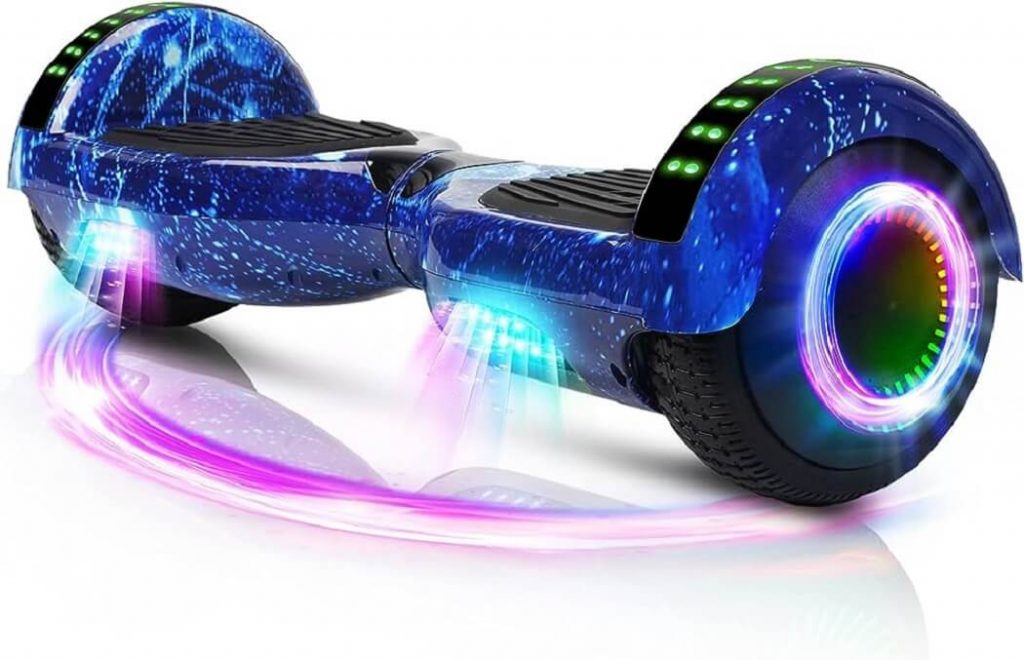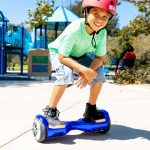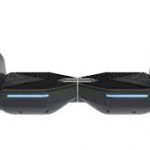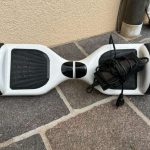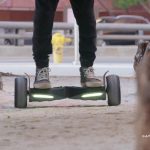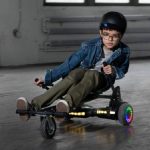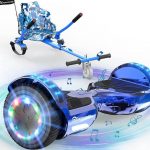Hoverboards have quickly become a popular mode of personal transportation, offering a futuristic and exhilarating way to glide around town. Just like any other technological marvel, these self-balancing scooters require occasional maintenance to keep them performing at their best. One crucial aspect of hoverboard maintenance is calibration and reset. In this guide, we will delve into the intricacies of calibrating and resetting your hoverboard to ensure a smooth and safe riding experience.
When Should Calibrate the Hoverboard
Calibrating a hoverboard is an essential maintenance task that helps ensure the proper functioning of the self-balancing system. While the exact timing for calibration might vary based on usage and individual models, there are certain situations and indicators that can guide you on when to calibrate your hoverboard:
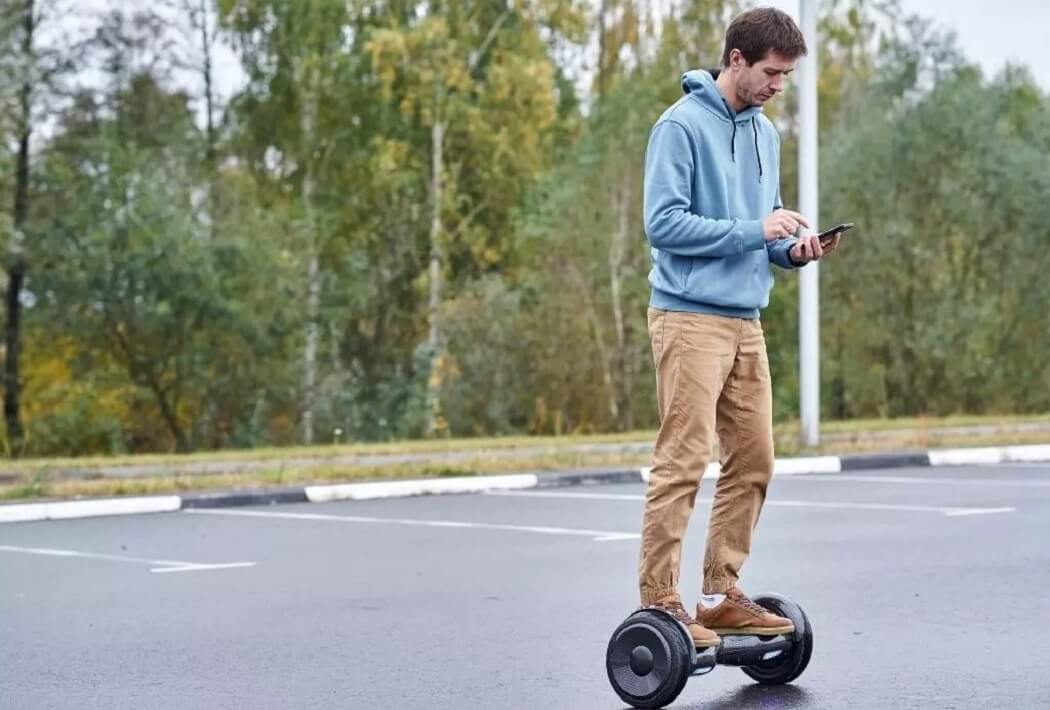
- Uneven Performance: If you notice that your hoverboard is consistently veering to one side while riding or not maintaining a level balance, it’s a clear sign that calibration might be needed. Uneven performance indicates that the sensors are not correctly interpreting the rider’s movements.
- Change in Handling: If your hoverboard’s responsiveness has changed significantly, such as becoming less sensitive to your movements or feeling more sluggish, recalibration might be necessary. This can help restore the intuitive handling you’re accustomed to.
- After Repairs or Modifications: If you’ve recently replaced any components, like the gyroscopes or wheels, or if you’ve made modifications to your hoverboard, recalibration is crucial. New components or alterations can affect the overall balance and performance.
- New Riders: If someone new is going to ride the hoverboard, especially if they have a significantly different weight or riding style, it’s a good idea to recalibrate. Different riders can impact the calibration settings.
- Riding Frequency: The more frequently you use your hoverboard, the more wear and tear its components experience. If you’re a frequent rider, it’s a good practice to recalibrate every few months to maintain optimal performance.
- After Transport: If you’ve transported your hoverboard, especially if it was handled roughly or subjected to vibrations, recalibration might be needed. Travel and bumps can slightly misalign the sensors.
- System Glitches: If you experience strange behavior from your hoverboard, such as sudden stops, erratic movements, or unexplained changes in LED indicators, it could be due to a calibration issue. Recalibrating might resolve these glitches.
- Battery Replacement: If you’ve replaced the battery in your hoverboard, recalibration might be necessary. Changes in battery weight and power delivery can impact the balance.
- Periodic Maintenance: Just like any other electronic device, periodic maintenance is essential. Adding recalibration to your maintenance routine can help catch and prevent issues before they become significant.
- Manufacturer Recommendations: Check your hoverboard’s user manual or the manufacturer’s official website for guidelines on calibration intervals. They might provide specific recommendations based on your model.
Remember that while these situations provide guidance, it’s always a good idea to consult your hoverboard’s user manual for precise instructions regarding calibration. Proper calibration ensures that your hoverboard continues to provide a safe and enjoyable riding experience.
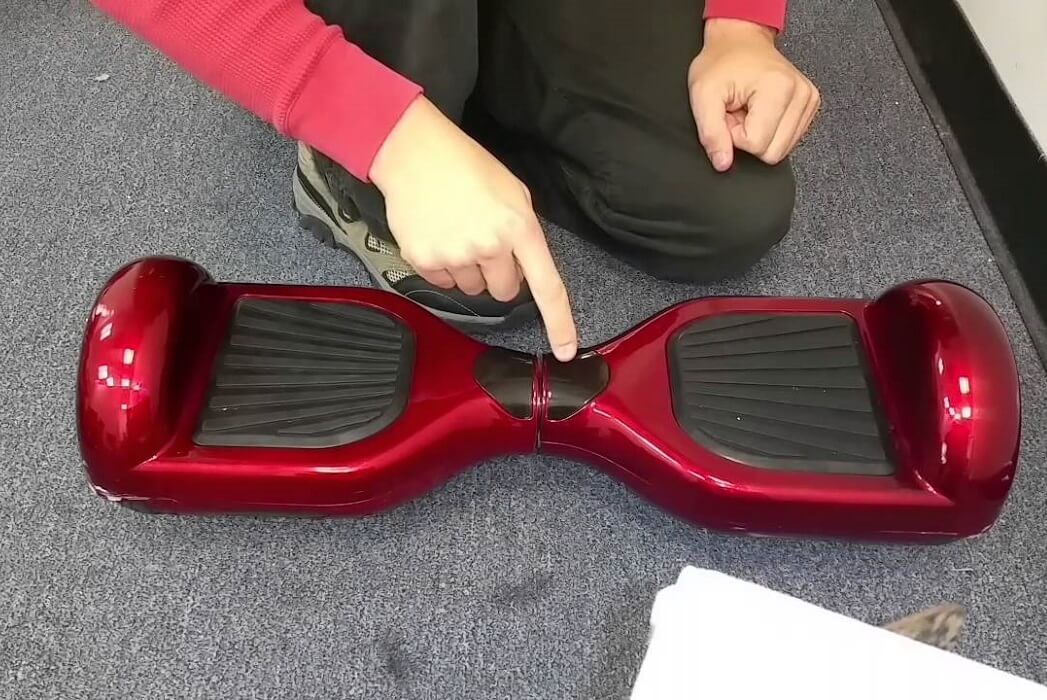
How to Calibrate a Hoverboard
Calibrating your hoverboard is akin to tuning a musical instrument. It fine-tunes the sensors and motors that keep your hoverboard balanced. Calibration becomes necessary when you notice your hoverboard veering to one side, being less responsive, or exhibiting uneven performance.
- Preparation: Begin by ensuring your hoverboard’s battery is adequately charged. A low battery might interfere with the calibration process.
- Level Surface: Place your hoverboard on a level surface. This provides a stable platform for accurate calibration.
- Power On: Turn on the hoverboard and let it enter the self-balancing mode. This is usually indicated by a steady blue light.
- Immobility: Keep the hoverboard stationary during calibration. Any movement can disrupt the calibration process.
- Calibration Sequence: Initiate the calibration sequence as per your hoverboard’s manual. Typically, this involves pressing specific buttons or following a sequence of movements. The hoverboard will blink its lights, signaling that it’s in calibration mode.
- Completion: Once the lights stop blinking and return to a solid blue (or another designated color), the calibration is complete. Turn off the hoverboard and then turn it back on before riding.
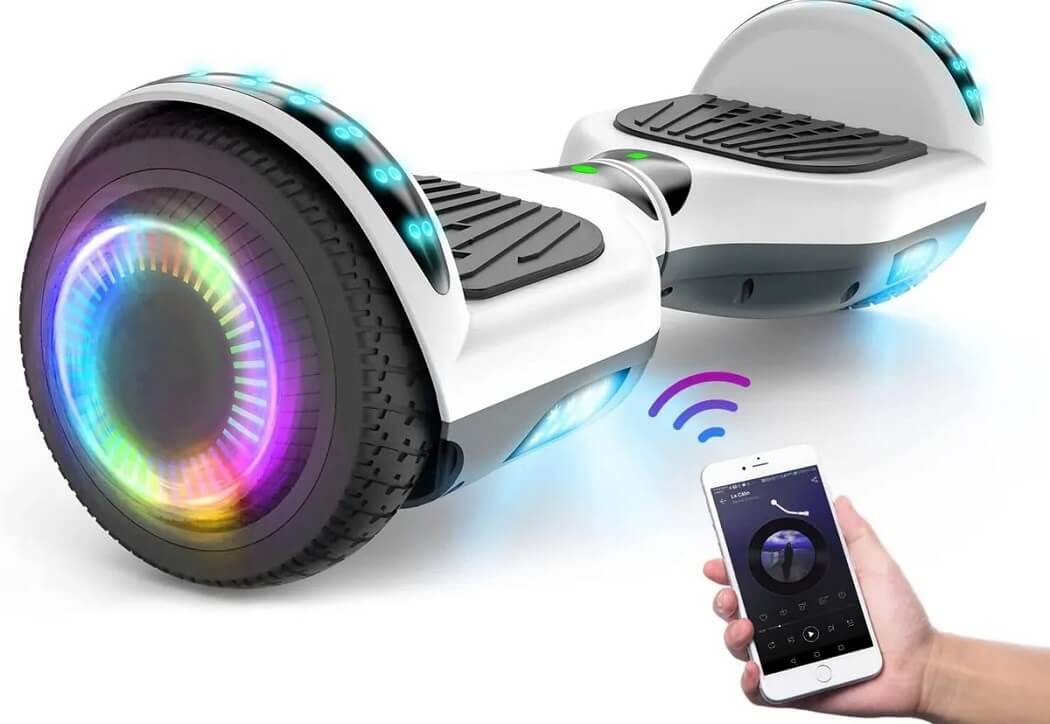
When Should Reset a Hoverboard
Resetting a hoverboard is a more significant step than calibrating it. It essentially restores the device to its default settings, which can help resolve various technical issues. Here are some situations in which you might consider resetting your hoverboard:
- Connectivity Problems: If your hoverboard is having trouble connecting to its app, Bluetooth devices, or other external devices, a reset might help clear any glitches causing these connectivity issues.
- Software Glitches: If you encounter unusual behavior such as sudden stops, jerky movements, or lights behaving abnormally, a software glitch could be the culprit. Resetting the hoverboard can often resolve such issues.
- Unresponsiveness: If your hoverboard isn’t responding to rider inputs as it should, a reset could potentially restore its responsiveness. This could include unresponsive foot pads or delayed reactions to leaning.
- LED Indicator Errors: If the LED indicators on your hoverboard are displaying errors or patterns that aren’t consistent with its normal operation, a reset might fix the issue.
- Inaccurate Battery Reporting: If your hoverboard is displaying inaccurate battery levels or shutting down unexpectedly due to battery-related issues, a reset might recalibrate the battery management system.
- App Malfunctions: Some hoverboards come with companion apps that offer additional features and control options. If the app is not functioning correctly or isn’t syncing with your hoverboard, a reset could potentially resolve the problem.
- System Freezes: If your hoverboard experiences frequent system freezes, where it becomes unresponsive and requires a restart, a reset might help stabilize its performance.
- After Firmware Updates: Sometimes, firmware updates can introduce unexpected bugs or glitches. If your hoverboard’s behavior changes after a firmware update, a reset could help mitigate these issues.
- Persistent Issues: If you’ve tried other troubleshooting steps and your hoverboard continues to exhibit persistent problems, a reset might be the next logical step to troubleshoot.
- Factory Settings: If you’re selling or giving away your hoverboard, performing a reset ensures that your personal data and custom settings are cleared, and the new owner starts with a clean slate.
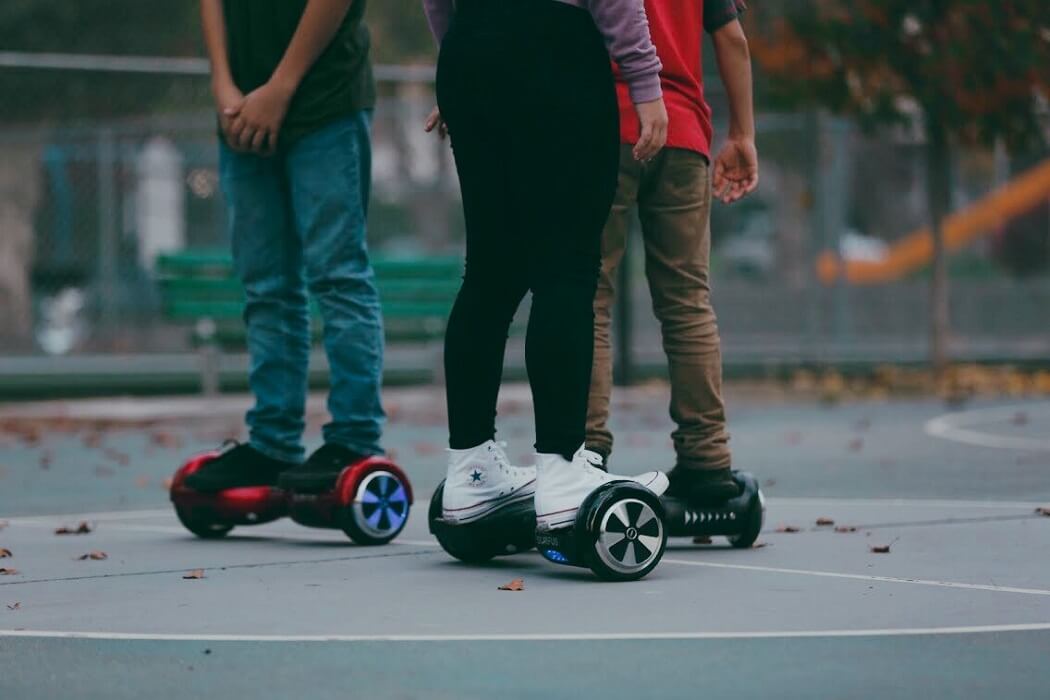
It’s important to note that while resetting can often resolve various issues, it should be used as a last resort after other troubleshooting steps have been exhausted. Before proceeding with a reset, consult your hoverboard’s user manual or the manufacturer’s support resources to ensure you’re following the correct procedure. Keep in mind that resetting will revert your hoverboard to its default settings, so any personalized settings or configurations will be lost.
How to Reset a Hoverboard
Resetting your hoverboard can resolve a multitude of issues, from connectivity problems to unresponsiveness. It essentially gives your hoverboard a fresh start, clearing any glitches that might have accumulated over time.
- Power Off: Start by turning off your hoverboard completely.
- Disconnect Battery: If possible, disconnect the battery for a minute or two. This ensures that all residual charge is drained, allowing the system to reset more effectively.
- Press and Hold Button: Locate the reset button on your hoverboard. This button is usually found near the charging port. Press and hold it for around 5 to 10 seconds.
- Reconnect Battery (if applicable): If you disconnected the battery, reconnect it at this point.
- Power On: Turn your hoverboard back on. It might perform a few lights blinks or movements to indicate the reset is in progress.
- Test Ride: Take your hoverboard for a test ride in a safe environment. Check if the issues you were experiencing have been resolved. If not, you might need to repeat the reset process or seek professional assistance.
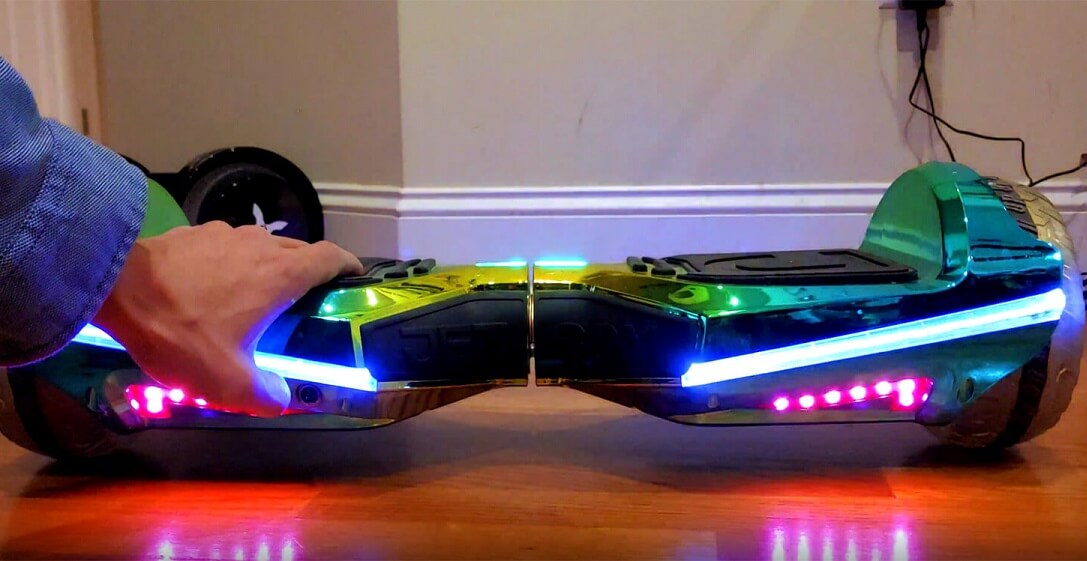
Conclusion
Calibrating and resetting your hoverboard are essential skills every hoverboard owner should possess. Regular calibration keeps your ride smooth and responsive, while a reset can troubleshoot a range of issues. Remember to consult your hoverboard’s user manual for specific instructions, as different models might have varying calibration and reset procedures. By mastering these techniques, you ensure that your hoverboard continues to provide a thrilling and safe journey every time you step on it. Read more on how to troubleshoot your hoverboard in our next article — Why Won’t My Hoverboard Turn On? What To Do?
How to Calibrate Hoverboard Video Review
FAQ
Q: Why is hoverboard calibration important?
A: Hoverboard calibration ensures that the sensors and motors responsible for balance are accurately calibrated. This results in smoother and more responsive riding, preventing issues like veering to one side or unresponsiveness.
Q: How often should I calibrate my hoverboard?
A: The frequency of calibration depends on how often you use your hoverboard. Generally, calibrating every few months or when you notice performance issues is a good practice.
Q: Can I calibrate my hoverboard on any surface?
A: For accurate calibration, it’s recommended to use a level and stable surface. This helps the hoverboard’s sensors establish a correct baseline for balance.
Q: What's the purpose of disconnecting the battery during reset?
A: Disconnecting the battery drains any residual charge and allows the system to fully reset. It’s akin to rebooting a computer to resolve glitches.
Q: How do I know if my hoverboard needs a reset?
A: If your hoverboard is experiencing persistent connectivity problems, unresponsiveness, or other technical glitches, a reset might be necessary.
Q: Does resetting my hoverboard delete my settings?
A: Yes, resetting a hoverboard returns it to its default settings. Make sure you have any custom settings saved elsewhere before performing a reset.
Q: What if my hoverboard still has issues after calibration and reset?
A: If issues persist, it’s recommended to consult your hoverboard’s user manual or contact the manufacturer’s customer support. They can provide more specific guidance based on your model.
Q: Can I calibrate and reset any hoverboard the same way?
A: Different hoverboard models might have slightly different calibration and reset procedures. Always refer to your user manual for accurate instructions.
Q: Do I need any special tools for calibration and reset?
A: Generally, no special tools are required. However, a screwdriver might be needed to disconnect and reconnect the battery for a reset in some models.
Q: Is professional help necessary for calibration and reset?
A: In most cases, calibration and reset can be done by following the instructions in your user manual. If you’re unsure or if issues persist, consulting a professional technician can be helpful.
Q: Can improper calibration or reset damage my hoverboard?
A: If calibration or reset is performed incorrectly, it might lead to performance issues. However, it’s unlikely to cause significant damage. Just make sure to follow the instructions carefully.
Q: Is there an indicator that calibration is successful?
A: Yes, most hoverboards will blink their lights or display a specific color pattern to indicate successful calibration.
Q: Can I calibrate and reset my hoverboard myself if I'm not tech-savvy?
A: Yes, as long as you carefully follow the instructions provided in your hoverboard’s manual, even those without technical experience can calibrate and reset their hoverboards.
Q: Can calibration and reset improve battery life?
A: Calibration and reset primarily focus on balance and performance. While they might indirectly contribute to battery optimization by improving overall efficiency, they don’t have a significant impact on battery life.
Q: Is it possible to prevent the need for frequent calibration and reset?
A: Regular maintenance, avoiding rough terrain, and gentle handling can reduce the need for frequent calibration and reset.
